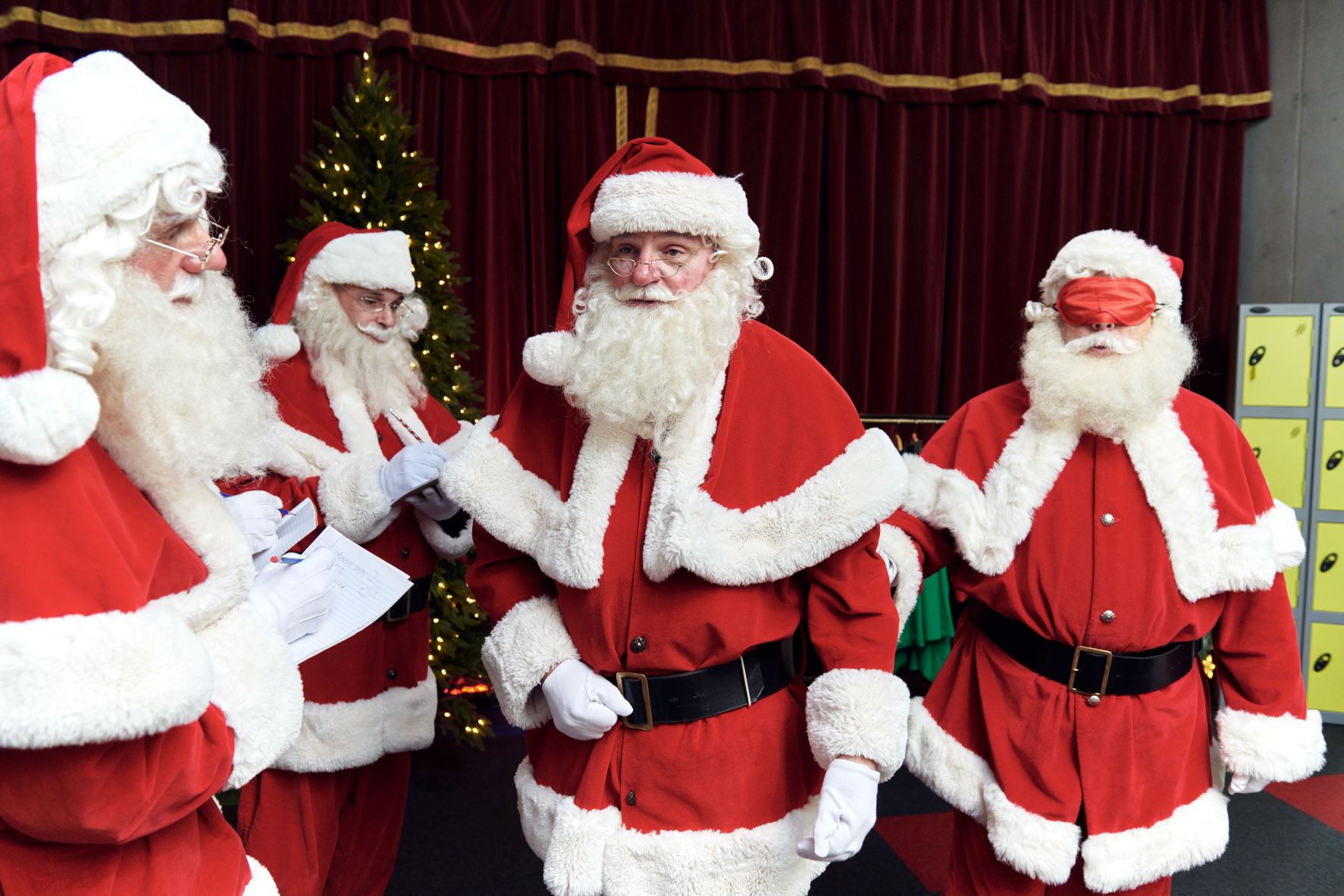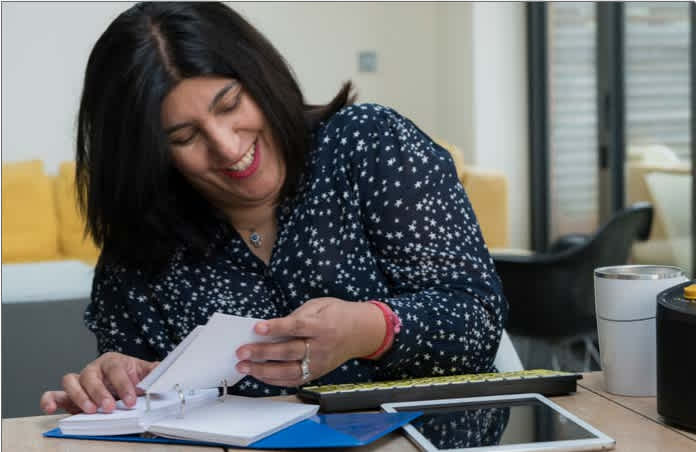This year, children all over the UK will be visiting Christmas grottos but have you ever thought about what this experience is like for children and adults with sight loss?
Particularly during the festive period, children with sight loss face several barriers that can cause them and their loved one’s feelings of exclusion and isolation. Christmas grottos are usually a highly visual experience but children with a visual impairment might not know what Santa and his elves look like so can feel left out.
That’s why Guide Dogs – the largest provider of support services for children, young people and families in the UK with sight loss – has partnered with the Ministry of Fun’s ‘Santa School’ to train Santas and Elves in grottos around the country to feel more confident about how to make this festive season accessible for all those who celebrate.
Pictured above is Alex Pepper, Head of Accessibility at Guide Dogs, sitting with guide dog River and Santa in a Christmas grotto, and below is an image of a Santa as he guides another Santa wearing a blindfold during sighted guide training while two others watch and take notes.

Make this Christmas more inclusive
We’ve drawn on the lived experiences of children with a visual impairment to develop some advice on what grottos can do to make sure every child, including those with a vision impairment, can enjoy the magic of Christmas.
A few simple ways you can make the world more inclusive for those with a vision impairment - at Christmas and throughout the year - include:
Introducing yourself to the person with a vision impairment and asking if they need support.
Never sneaking up on someone, grabbing them or assuming they need help without checking.
Let the person know when you’re leaving them.
Point out key things in the surroundings and describe them using examples that don’t rely on sight.
Get creative and think about how you can help people experience your grotto using all their senses – for example, the smell of Gingerbread or pine needles, the sound of carols, or cold snow crunching underfoot.
Using bright colours and good tonal contrast to help people with some residual vision make things out more easily.
Keep walkways clear and, wherever possible, make sure there is plenty of space for someone to navigate with a guide dog, long cane or their sighted guide.
Making sure the gifts don’t all rely on vision (such as colouring books or rubix cubes) as this can be disappointing for a child with VI. Instead, think about toys children don’t need their sight to enjoy, such as a teddy bear, a customised short story book or scented pens/pencils.

Growing up with partial sight, I did appreciate the visual aspect of Christmas but always felt like I was only getting half the experience. I was always aware I couldn’t see half or most of the decorations on the tree and in cases when I came across big displays, I struggled to appreciate it all as it was simply too much for my eyes to take in.
Alex Pepper, Head of Accessibility at Guide Dogs

“I got very nervous when going to grottos as it was often dark and busy when queueing and a lot of the time I couldn’t use the toy I was given because of my sight. I used to love the smell of a real tree at home and often got in trouble for touching the tree, because I liked how it felt” Alex continues.
Are you interested in learning how to guide a person with sight loss if they need it? This festive period, we’re encouraging members of the public to sign up to our Guiding Stars campaign. This introduction to sighted guiding will help to give you the skills and confidence to guide a person with sight loss if they need it.
If you'd like to learn more about guiding someone with sight loss, visit our sighted guiding pages.



